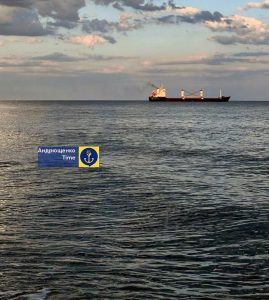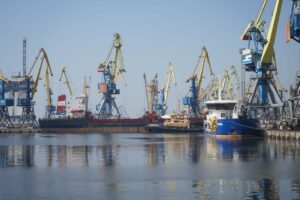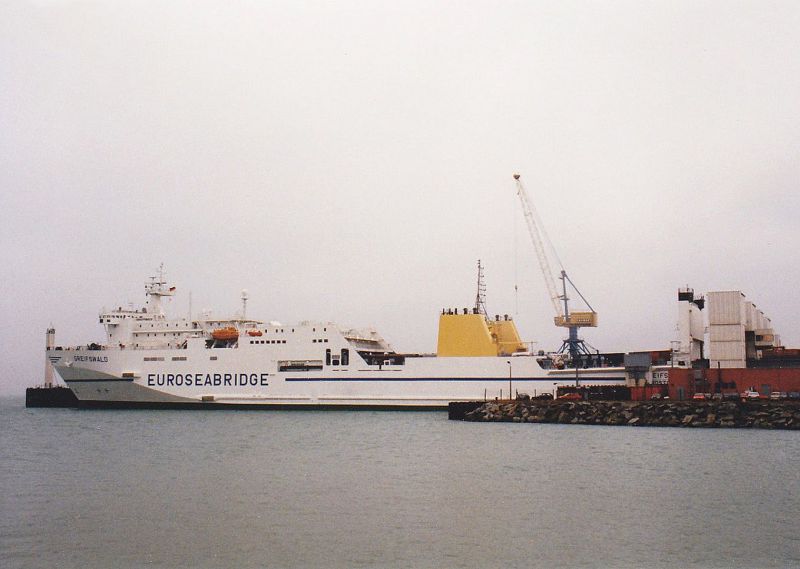Ports and roads in Ukraine: a complex equation with many unknowns
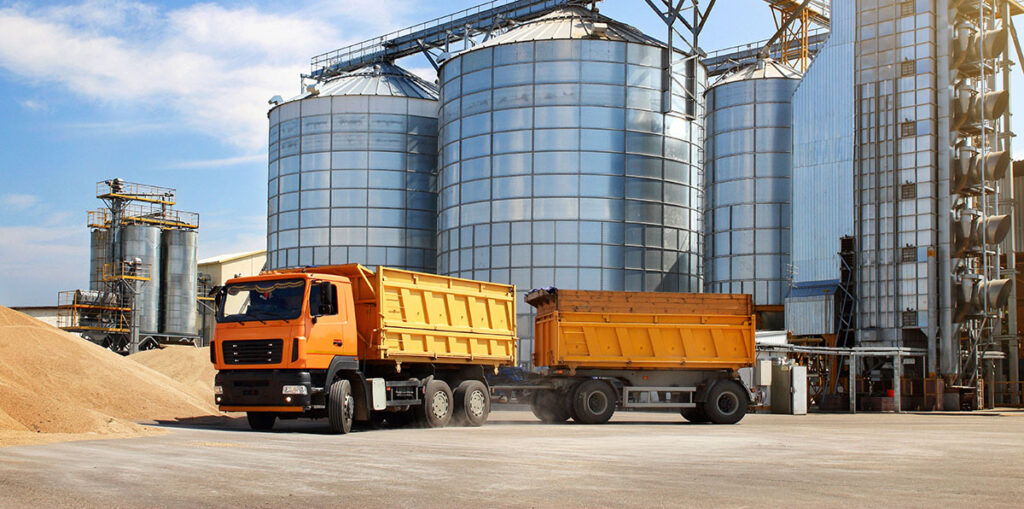

The problem with the highways that lead to the ports of Kherson, Mykolaiv and Mariupol is far from new, but still very urgent. Heavy-duty transport follows city streets to these ports, demolishing roads and causing great inconvenience to local residents.
The situation may worsen even more this summer, when a new flow of grain for export will go to the ports. It will be clearly more than last year, given the forecasts for a record harvest.
In general, the problem need to be solved, and, as they say, even yesterday.
To assess the scale of the disaster, we present some figures. The grain terminals of the Mykolaiv ports are able to accept (according to estimates based on open data with the technical characteristics of 10 terminals) 1,700 cars per day, which transport 60-80 tons of grain each. In Kherson the volumes are less: we are talking about 430 trucks per day. And this is only grain carriers: unfortunately, there is no data on the total flow of freight transport entering these cities.
Earlier, USM wrote about whether the port grain terminals will cope with the new harvest and how much capacity they have. But what will happen to the roads? Are there plans to build bypass routes for heavy vehicles? How to minimize the destructive impact of trucks on city roads if there is nowhere to build new ones or for nothing?
With these questions, USM has appealed to the representatives of the authorities of Kherson, Mykolaiv and Mariupol.
Kherson deadlock
The most “hopeless” situation seems to have developed in Kherson. Historically, the city was built around the port. And the seaport was now in the very center of Kherson. Nearby there is also the Port-Silo (Kherson Plant of Bread Products PJSC), the Kherson Riverport of Ukrrichflot, and a number of other terminals. And grain carriers go to all of them along the city streets, accumulating in the end next to the port checkpoints. In the case of the seaport – generally in the area of the main city embankment at the beginning of the central avenue of Kherson.
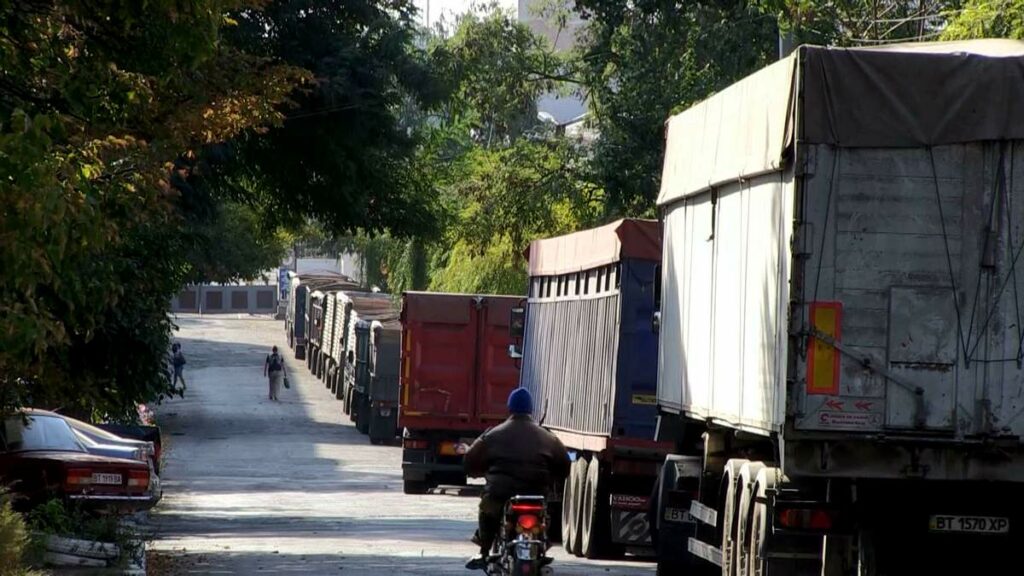
They have tried to deal with this problem for a long time, however, without much success. The fact is that you cannot build a new bypass road to bypass city streets to the ports. There’s just now other way. Options for a way out of the situation, it would seem, lie on the surface: strict weight control of trucks entering the city, parking areas for cars on the outskirts of the city and dispatching so that cars are sent from these sites to ports not at the request of drivers, but in regular turn. Thus, trucks will not accumulate in the city itself. And, of course, the roads must be designed for the passage of heavy trucks. That is, it needs to be repaired using appropriate technologies.
The authorities have repeatedly tried to take measures to streamline the movement of trucks in Kherson, but they have never been able to fundamentally change the situation.
We even appealed to specialists from the Kiev Institute for Designing Road Facilities, who has developed a scheme for the movement of trucks in Kherson. However, everything remained at the design stage.
There were even radical proposals. Once during a discussion in the City Council of the above-mentioned scheme, the deputies asked how officials are going to unload the central avenue of Kherson from trucks. In response, the Head of the city administration of roads, Vyacheslav Nikitenkov, said that the most optimal solution was to “weld the gates to the seaport”.
The current leaders of the city also acknowledge the problem.
In the spring of this year, the mayor of Kherson, Igor Kolykhaev, carried out a meeting with representatives of trucking companies that carry cargo to ports and invited them to participate financially in road repairs. There has been no response from the carriers yet.
“If a freight vehicle moved without violating the weight regime, then it would not create any problems. And since many carriers violate this weight regime and go with a significant overweight, and the roads in Kherson and throughout Ukraine were designed 50 years ago and in accordance with completely different GOSTs (All-Union State Standarts), because of this, freight transport destroys roads. Working with carriers is futile. And there will be no result from this. The only option is to work with stevedores, work with port operators who accept this cargo. We have a certain route along which freight transport moves, and this route suffers and is destroyed the most,” Acting Deputy Mayor of Kherson Yuriy Stelmashenko, in whose area of responsibility the roads are, explained to USM the situation.
The authorities of Kherson also appeal to the terminals.
“We offered them to participate financially in the overhaul of roads that lead to port terminals. The letter with the request has already been sent, and we are awaiting a response from the USPA. Which of the port operators agreed to our proposal, I hope we will find out in the near future. At the council of port in Kherson, I also expressed my position that the city has nothing from these cargo operations, except for losses associated with the restoration of the road surface,” explained Stelmashenko.
In general, the problem with roads and trucks in Kherson has not been resolved. But – at least they are trying.
Mykolaiv tunnel
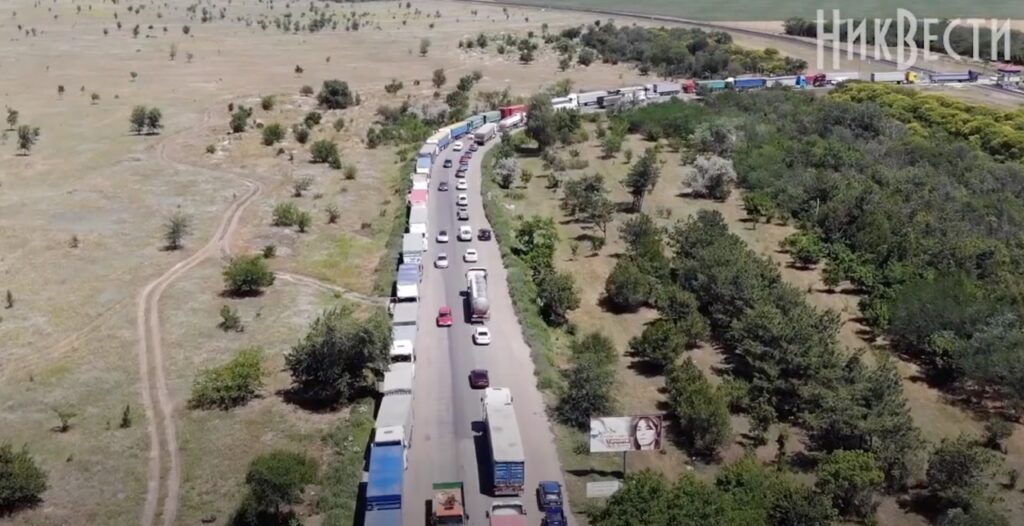
Entrance to Mykolaiv from Kherson
In Mykolaiv, the situation with roads and cargo delivery to ports is virtually identical to that of Kherson.
Trucks accumulate in long queues on the streets of the city and periodically block the operation of the railway crossing. Due to the lack of parking areas, cars are waiting for their turn for unloading on the sides of the Bashtanskoye and Kherson highways. The situation is aggravated with the beginning of the grain harvest season.
USMhas asked the Mykolaiv regional state administration and representatives of the city authorities, what do they do to solve the problem.
According to the information provided by the acting head of the Infrastructure Department of the Mykolaiv Regional State Administration Sergey Sikorsky, at the moment there are plans to reconstruct two local roads that bypass the city.
These roads will connect together with the M-14 Odesa – Melitopol – Novoazovsk highway and with the H-14 Oleksandrivka – Kropyvnitsky – Mykolaiv highway, thus creating the as it is called “Southern Bypass”.
“On the initiative of the Mykolaiv regional state administration in 2019, the implementation of the project “Overhaul of public highways of local importance” has begun. There are also plans to build a belt route bypassing Mykolaiv, which will connect international highways with highways leading to the marine industry enterprises of the Korabelniy District. Mykolaiv, skirting the Korabelniy District itself. This, in turn, will make it possible to significantly increase the possibilities of transshipment of goods and at the same time unload the roads of the Korabelniy District and the city as a whole, by withdrawing the flow of heavy transport outside the city of Mykolaiv,” Sergei Sikorsky said.
What these roads will be, it became known in July 2020. Then the local city council made changes to the program of socio-economic development of the city, providing for the construction of a concrete road along Novozavodskaya Street, the development of a project for the construction of an underground tunnel in the Korabelniy District and the construction of a road from the village of Shevchenkovo to the Korabelniy District in order to avoid the passage of trucks through Bogoyavlensky Avenue. In general, it is planned to build two roads and a tunnel under the railway crossing so that the trucks do not block the movement of trains.
“The decision was made so that we could develop three projects, – Alexander Senkevich, the mayor of Mykolaiv, explained at that time. – We need a project of a cement-concrete road along Novozavodskaya street. It is necessary to order the design documentation for the tunnel under the railway crossing in the Korabelniy District, PFS (Project Feasibility Study) of which was developed with the participation of stevedoring companies, it is necessary to proceed to the development of the project. And the last is the development of design documentation for a part of the road from the sign “Entrance to Mykolaiv” from the village of Galitsinovo … this is bypassing the Balabanovka microdistrict from Bogoyavlensky Avenue to Aivazovsky Street in the Korabelniy District of the city of Mykolaiv, PFS, design estimates.”
He also noted that for these roads it is necessary to “look for costs, including the state level.”
In addition, in July 2020, Senkevich announced that the tunnel could be built for the money that the Qatari company QTerminals will invest to update the city’s infrastructure. Company won the competition for the Olvia port concession.
As for the new belt route bypassing the Balabanovka microdistrict, this project, as of June 2021, is at the stage of interdepartmental approvals.
“Now the construction of the bypass road is at the stage of obtaining town-planning conditions and restrictions from the Department of Architecture. The cost of design and estimate documentation is 784 thousand hryvnias. The cost of the construction work itself will be known only after passing the examination. The source of financing for the construction is the local budget. The participation of the ports is now under discussion,” – the housing and communal services department of the Mykolaiv City Council told USM.
Situation in Mykolaiv could be alleviated by sites for lorries, but there are not enough of them.
“The existing parking spaces for large vehicles do not cover the entire needs. In 2020, proposals were prepared for Ukravtodor for the construction of three additional TIR parking lots. Sources of financing for the construction will be determined during the development of the State program for the construction of specialized service sites for parking trucks,” said Sergei Sikorsky, acting Head of the infrastructure department of the Mykolaiv Regional State Administration.
Mariupol knot
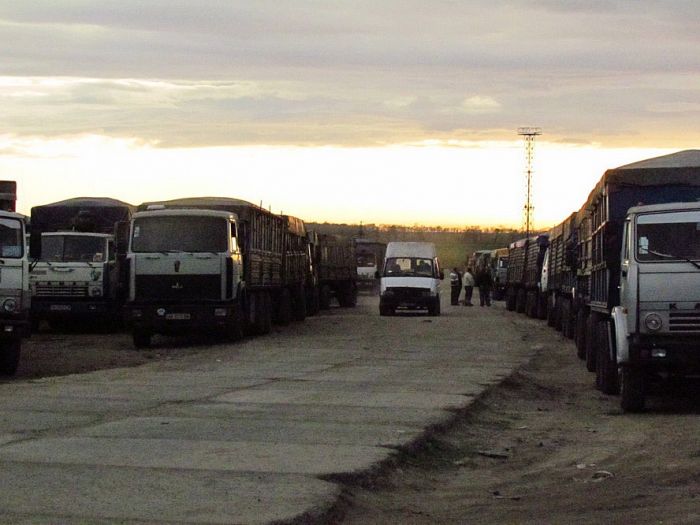
Until 2014, the main flow of cargoes to the port of Mariupol went by rail. And the construction of a bypass road to the port was discussed only within the framework of plans to expand the recreational zone in the city.
After Ukraine has lost control over the Donetsk railway junction in 2014, the shippers “moved” to motor vehicles, and now the road is not needed as part of the development of the recreation area. Transport goes to the port through the city, creating a problem similar to that of Mykolaiv and Kherson. Moreover, in Mariupol, trucks are prohibited from driving around the city during the daytime, and this creates additional logistical difficulties.
As a result of problems with railway transport and highways, the volume of cargo transshipment in the port has significantly decreased. This is caused by the loss of shippers from Donbass.
“Until 2014, our port steadily handled 14-15 million tons of cargo annually, but it was 17 million tons a year. At that time, metal products were supplied to us from ten enterprises in the east of Ukraine. There were a lot of building materials, containers,” explains Igor Barskiy, acting director of the Mariupol port.
In 2019, for example, the port of Mariupol handled 6 million tons of cargo.
In 2021, it was decided to revive the idea of a 40-kilometer bypass road, and to build it as part of the presidential state program.
“The bypass road is a support for the commercial port, which is not yet able to increase the volume of cargo. In this matter, we cooperate with the Office of the President of Ukraine. The project will be fully implemented as part of the Big Construction,” said the mayor of Mariupol Vadim Boychenko in May 2021.
However, there has been no progress on this issue yet.
“The issue of construction somehow was raised and then came to naught. I will say that a new access road to the port is very necessary, because I know that I have made freight transport with city roads. But now the city has no finances, and so far the construction of the road, as far as I know, was not included in the city budget. But this road is definitely needed, because it will relieve the city,” explained Boris Prokhorenko, head of the parliamentary commission on industry, transport and road infrastructure of the Mariupol City Council in a conversation with a USM correspondent.
Disappointing conclusion
The conclusion from all of the above suggests itself disappointing. In Kherson, in fact, the problem with the roads cannot be solved otherwise than by investing significant funds from the city budget in capital repairs. It is hardly advisable to hope that trucking companies and cargo owners will suddenly want to financially help road workers. As they say, sorry, Michael, it’s just business – the cargo will simply go to other ports, where there will be no additional costs. It turns out that only budget money will have to be invested in new asphalt.
The situation can somehow be saved by the parking areas for freight transport at the entrances in cities. There are such in Kherson, but they are private and there are only two of them. It means, it is necessary to build new ones.
Plus, we need strict control over the observance of the weight regime by road carriers. At the end of 2020, Ukravtodor has launched the first in Ukraine bridge objects for automatic weighing in motion Weigh-in-Motion (WiM) in the Kherson region.
According to the press service of Ukravtodor, the complexes are located at the entrances to Kherson and are designed in such a way that it is impossible to bypass them. In particular, on the M-14 Odesa-Melitopol-Novoazovsk route, the sensors are on the bridge over the Dnipro, near Oleshek. On the P-47 Kherson-Novaya Kakhovka-Genichesk route, the sensors are located on the bridge over Ingulets.
“Weighing in motion platforms actually block the traffic of cargo-carrying, the end point of which is the port in Kherson. Both roads are among the main transport routes of the entire South of Ukraine. After all, they lead to the logistic sea (Ochakov) and river (Kherson, Mykolaiv) hubs. In particular, grain carriers use these routes. They often move with a weight of 50-60 tons, and sometimes 80 tons. But, thanks to the WiM site, not a single car that crosses the bridge across the Dnipro and Ingulets goes unnoticed,” reported in Ukravtodor after the installation of the complexes.
Unlike Kherson, where the existing situation will most likely have to be reconciled, in Mykolaiv and Mariupol there are at least plans for the construction of new bypass roads. It all depends on the availability of money in the budget and political will to eliminate the problem.
In this regard, we draw the attention of the Ministry of Infrastructure to the need to improve interdepartmental coordination at the level of strategic plans again, which will undoubtedly benefit both stevedores and road workers, and people living in port cities.
Evgenia Tyagunova, Evgeny Bely
Read also: Driving to the port: how and when the roads in the Odesa region will be changed

